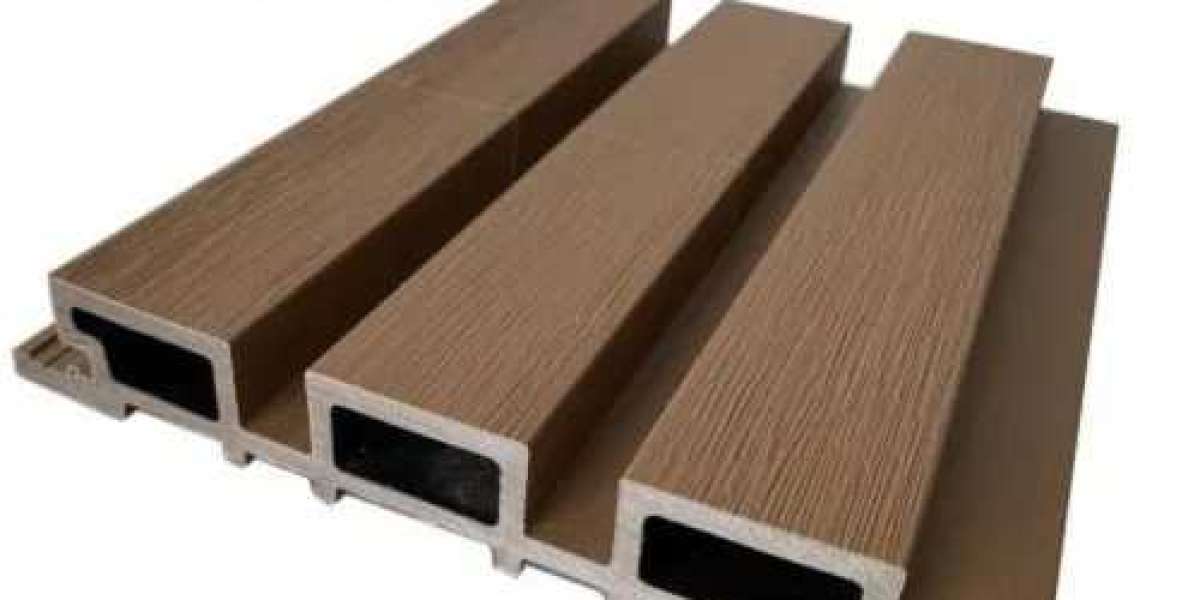In the realm of interior design and construction, the quest for materials that are both stylish and sustainable has led to innovative solutions. One such innovation is the Wood Plastic Composite (WPC) wall panel. Combining the aesthetic appeal of wood with the durability and low maintenance of plastic, Wpc panel for wall price are becoming increasingly popular. This blog delves into the world of WPC wall panels, exploring their benefits, applications, installation process, and maintenance tips.
What Are WPC Wall Panels?
WPC wall panels are composite materials made from a blend of wood fiber or wood flour and thermoplastics such as polyethylene, polypropylene, or polyvinyl chloride. These components are combined with various additives to enhance the Wpc wall panel price, including stabilizers, colorants, and UV protectants. The result is a material that mimics the appearance of natural wood but offers enhanced durability and resistance to environmental factors.
Benefits of WPC Wall Panels
Aesthetic Appeal: WPC wall panels offer the natural look and feel of wood, available in a variety of textures, colors, and finishes. This versatility allows homeowners and designers to achieve the desired aesthetic for any interior space.
Durability: Unlike traditional wood, WPC is resistant to moisture, rot, and pests. This makes WPC wall panels an excellent choice for areas prone to humidity, such as bathrooms and kitchens.
Low Maintenance: WPC panels do not require regular painting, staining, or sealing. They are easy to clean and maintain, requiring only occasional wiping with a damp cloth.
Eco-Friendly: Many WPC products are made from recycled materials, making them an environmentally friendly choice. Additionally, WPC panels can be recycled at the end of their life cycle.
Cost-Effective: Although the initial cost of WPC panels may be higher than traditional wood, their long-term durability and low maintenance requirements can lead to cost savings over time.
Applications of WPC Wall Panels
WPC wall panels are versatile and can be used in various applications, including:
Residential Interiors: Living rooms, bedrooms, kitchens, and bathrooms can all benefit from the stylish and durable nature of WPC panels.
Commercial Spaces: Offices, retail stores, and restaurants can utilize WPC panels to create a sophisticated and professional environment.
Outdoor Applications: WPC's resistance to moisture and pests makes it suitable for outdoor use, such as in patios, decks, and garden walls.
Public Spaces: Airports, train stations, and public buildings can use WPC panels to achieve a durable and aesthetically pleasing finish.
Installation Process
Installing WPC wall panels is a straightforward process that can be completed by professionals or DIY enthusiasts. Here is a step-by-step guide to installing WPC wall panels:
Preparation: Ensure the wall surface is clean, dry, and free of any debris. Measure the area where the panels will be installed to determine the number of panels needed.
Cutting the Panels: Use a saw to cut the panels to the desired size. Make sure to account for any openings, such as windows or doors.
Applying Adhesive: Apply a high-quality adhesive to the back of each panel. Be sure to follow the manufacturer's instructions for the adhesive.
Placing the Panels: Press the panels firmly against the wall, starting from one corner and working your way across. Use a level to ensure the panels are straight.
Securing the Panels: For added security, use nails or screws to secure the panels in place. Make sure to countersink the fasteners and cover them with matching filler.
Finishing Touches: Once all the panels are in place, apply any necessary trim or molding to complete the look.
Maintenance Tips
Maintaining WPC wall panels is easy and requires minimal effort. Here are some tips to keep your WPC panels looking their best:
Regular Cleaning: Wipe the panels with a damp cloth to remove dust and dirt. For stubborn stains, use a mild detergent and a soft brush.
Avoid Harsh Chemicals: Do not use abrasive cleaners or solvents, as they can damage the surface of the panels.
Inspect for Damage: Periodically check the panels for any signs of damage, such as cracks or loose fasteners. Repair or replace damaged panels as needed.
UV Protection: If the panels are installed in an area exposed to direct sunlight, consider applying a UV protectant to prevent fading and discoloration.
Conclusion
WPC wall panels offer a modern, stylish, and sustainable solution for both residential and commercial interiors. Their combination of aesthetic appeal, durability, low maintenance, and eco-friendliness makes them an excellent choice for a wide range of applications. Whether you're renovating your home, designing a new office space, or creating an inviting outdoor area, Wpc wall panel sheet price provide a versatile and practical option that will stand the test of time.
Frequently Asked Questions (FAQs):
Q1: What makes WPC wall panels from Singhal Industries a better choice compared to traditional wood panels?
WPC wall panels from Singhal Industries combine the aesthetic appeal of natural wood with the durability and low maintenance of plastic. Unlike traditional wood, these panels are resistant to moisture, rot, and pests, making them ideal for areas prone to humidity, such as bathrooms and kitchens. They are also eco-friendly, often made from recycled materials, and can be recycled at the end of their life cycle. Additionally, WPC panels do not require regular painting, staining, or sealing, resulting in lower maintenance costs over time. Despite a higher initial cost, their long-term durability and minimal upkeep make them a cost-effective choice.
Q2: How versatile are Singhal Industries’ WPC wall panels in terms of applications and design options?
Singhal Industries' WPC wall panels are highly versatile, suitable for a variety of applications in both residential and commercial spaces. They can be used in living rooms, bedrooms, kitchens, and bathrooms, as well as offices, retail stores, and restaurants. Their resistance to moisture and pests also makes them an excellent choice for outdoor applications, such as patios and garden walls. Available in a wide range of textures, colors, and finishes, these panels allow homeowners and designers to achieve the desired aesthetic for any interior space, from sophisticated and professional environments to stylish and modern home interiors.
Q3: What is the installation process for WPC wall panels from Singhal Industries, and how can I maintain them?
Installing Singhal Industries' WPC wall panels is a straightforward process that can be completed by professionals or DIY enthusiasts. Begin by ensuring the wall surface is clean, dry, and free of debris. Measure the area, cut the panels to the desired size, apply a high-quality adhesive to the back of each panel, and press them firmly against the wall. For added security, use nails or screws to secure the panels in place and cover the fasteners with matching filler. To maintain the panels, regularly wipe them with a damp cloth to remove dust and dirt, and avoid using harsh chemicals that could damage the surface. Periodically inspect the panels for any signs of damage and consider applying a UV protectant if they are exposed to direct sunlight to prevent fading and discoloration.








